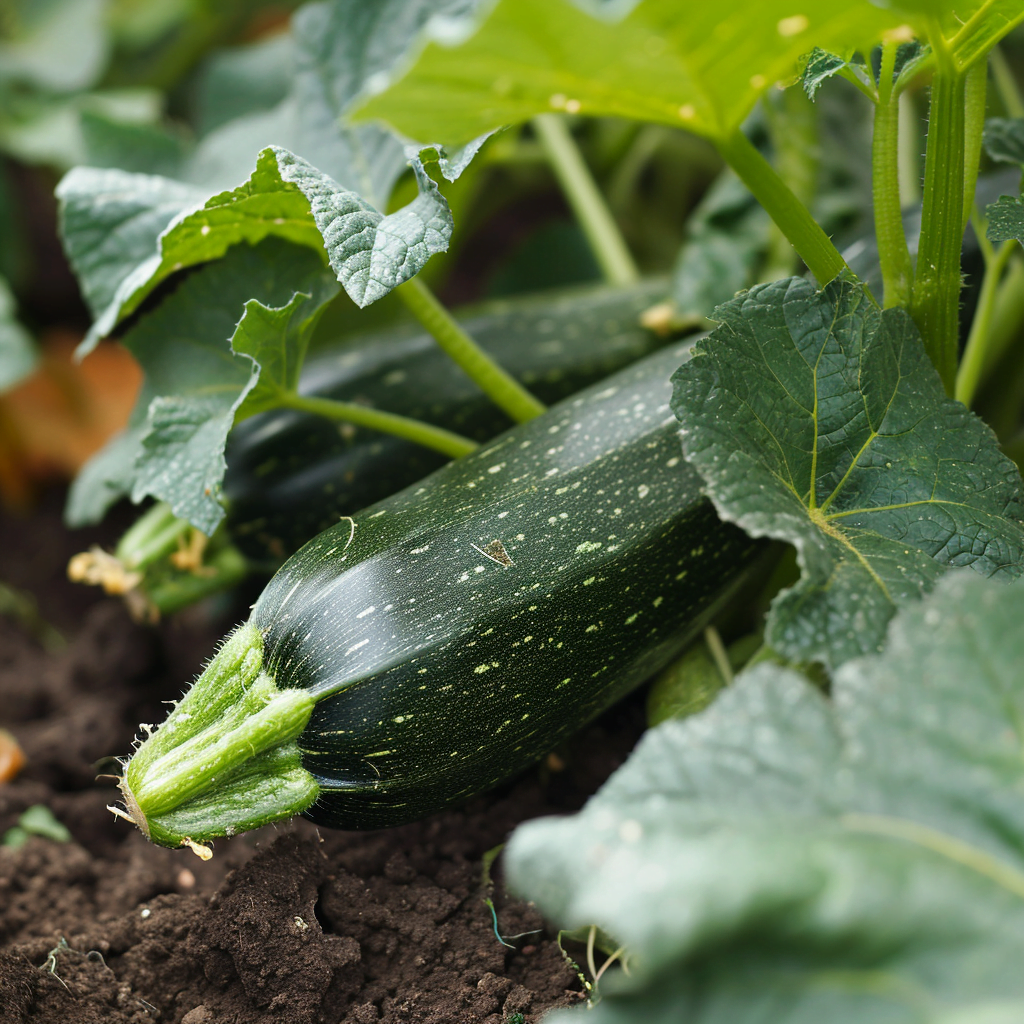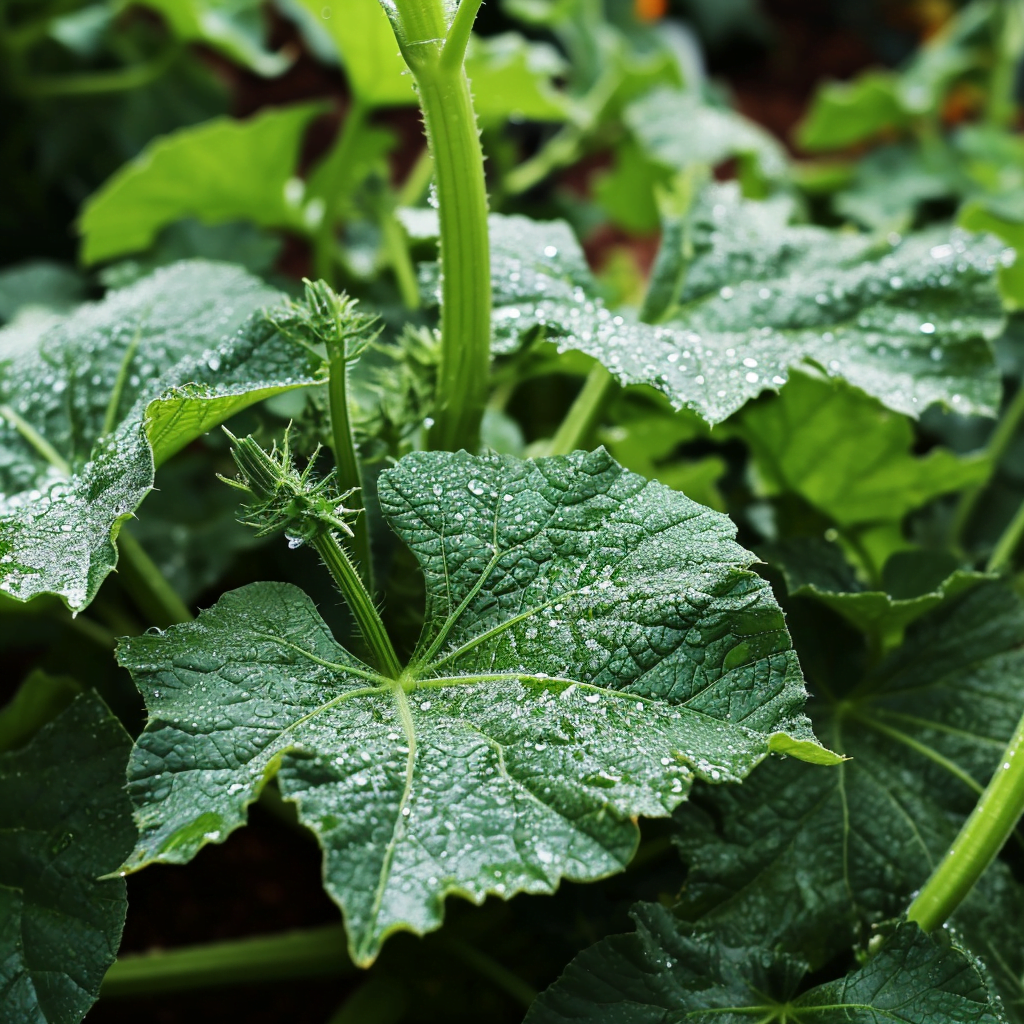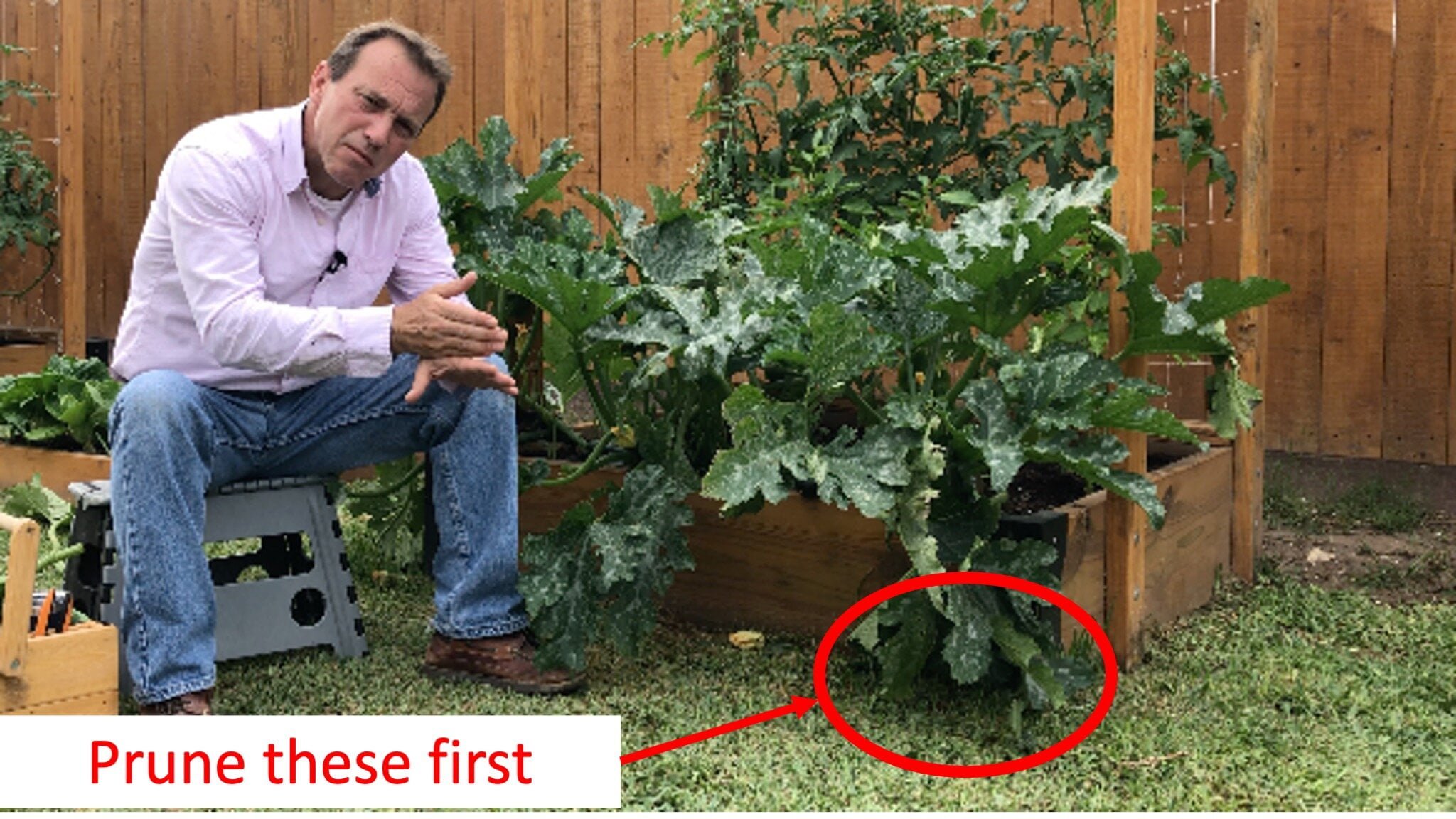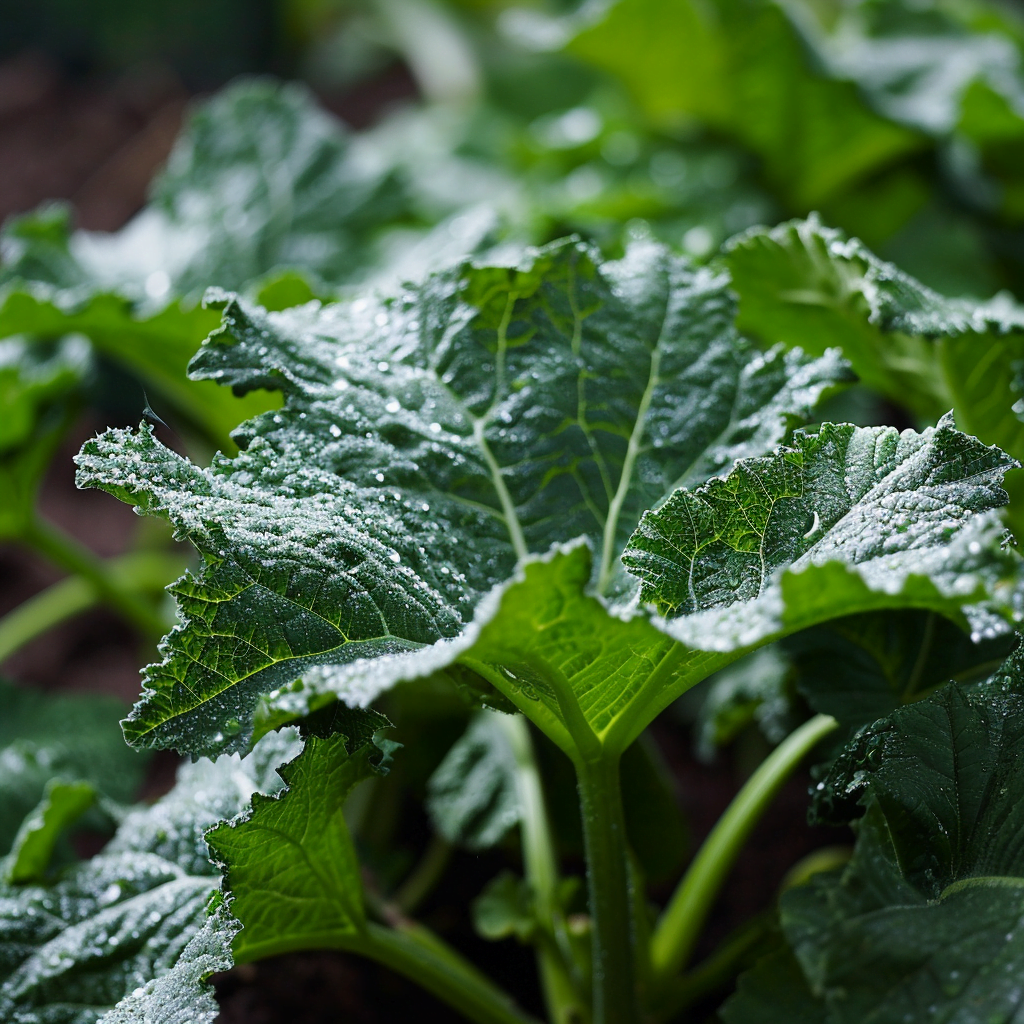You’ve been enjoying a bountiful harvest of zucchinis from your garden all summer long, but now the zucchini plant leaves seem to be taking over your garden space. Don’t worry, you will learn How to Trim Zucchini Plant Leaves in this informative article. Trimming zucchini plant leaves is a simple and effective way to keep your plants healthy and encourage better fruit production. In this article, we’ll guide you through the process of trimming zucchini plant leaves, helping you maintain a well-organized and thriving garden. So, grab your gardening gloves and let’s get started!
Why Trim Zucchini Plant Leaves
Trimming zucchini plant leaves is an essential practice for any gardener looking to optimize the health and productivity of their plants. By cutting back the leaves, you can promote better air circulation, reduce the risk of diseases, and improve the overall appearance of your plants.
Promotes Air Circulation
One of the main reasons why you should trim zucchini plant leaves is to promote better air circulation around the plant. Zucchini plants are known for their large and dense foliage, which can create a humid microclimate around the plant. This warm and moist environment is ideal for the growth of fungal diseases and can hinder the plant’s ability to receive sufficient sunlight and pollination. By removing excess leaves, you allow air to circulate more freely, helping to prevent the buildup of moisture and reducing the risk of fungal infections.
Reduces Disease
Trimming zucchini plant leaves can also help reduce the risk of diseases. The dense foliage of zucchini plants can create a favorable environment for various fungal pathogens such as powdery mildew, leaf spot, and downy mildew. These diseases can spread rapidly if left unchecked, leading to stunted growth and decreased yield. By removing affected leaves and thinning out the foliage, you can minimize the chances of disease development and improve the overall health of your plants.
Improves Plant Appearance
In addition to the practical benefits of trimming zucchini plant leaves, it can also enhance the aesthetic appeal of your garden. Over time, zucchini plants can become unruly and overgrown, with leaves sprawling in all directions. By pruning and shaping the plant, you can achieve a more attractive and organized appearance. Not only will this make your garden more visually pleasing, but it will also make it easier to tend to and harvest your zucchinis.
When to Trim Zucchini Plant Leaves
Knowing when to trim your zucchini plant leaves is crucial for achieving the best results. Here are three key stages during the plant’s growth where trimming is recommended:
Early Growth Stage
During the early growth stage of your zucchini plants, it’s important to start removing some of the larger leaves to encourage the development of new growth. This can be done once the plant has established a few true leaves. By selectively pruning the larger leaves, you allow the plant to redirect its energy towards the growth of new branches and flowers. This early trimming also helps shape the plant and promote a more compact and manageable form.
Mid-Season
As your zucchini plants reach their mid-season stage, it’s a good time to assess their overall health and remove any diseased or damaged leaves. Inspecting the plants regularly allows you to identify any signs of fungal infections or pests. By promptly removing affected leaves, you can prevent the diseases from spreading further and help the plants recover. This mid-season trimming helps to maintain a healthy and productive plant throughout the growing season.
Late Season
Towards the end of the growing season, zucchini plants may start to show signs of exhaustion or decline. Trimming at this stage can help redirect the plant’s energy towards ripening and completing the current fruiting cycle. You can selectively remove some of the larger leaves that shade the developing fruits, allowing more sunlight to reach them and speed up the ripening process. Additionally, pruning at this stage can help minimize the risk of disease development as the plants near the end of their lifecycle.
Tools Needed
Before you begin trimming your zucchini plant leaves, it’s essential to gather the necessary tools for the job. Here are the tools you will need:
Gardening Gloves
Investing in a good pair of gardening gloves is crucial to protect your hands from thorns, sharp edges, and any potential skin irritation. Zucchini plants, like other cucurbits, can have prickly stems and leaves, so wearing gloves will prevent any discomfort while handling the plants.
Pruning Shears
Pruning shears are the most important tool for trimming zucchini plant leaves. Look for a high-quality pair of sharp pruning shears that can easily cut through the thick stems and foliage of the plants. Make sure to keep the blades clean and sharp for precise and clean cuts, which reduce the risk of plant damage and disease transmission.
Disinfectant Spray
To maintain cleanliness and prevent the spread of diseases, it’s essential to have a disinfectant spray on hand. Regularly disinfecting your pruning shears and other tools helps eliminate any potential pathogens that may be present on the surface. Simply spray the tools with the disinfectant, then wipe them clean with a cloth before and after each use.

Preparing for Trimming
To ensure a successful trimming session, you need to prepare both your plants and tools properly. Here are some important steps to follow before you begin trimming:
Choose the Right Time
Selecting the right time to trim your zucchini plant leaves is crucial for minimizing stress and maximizing the plant’s recovery. Avoid trimming during extreme heat or under direct sunlight, as this can potentially shock the plants. Ideally, choose a cool and overcast day or trim in the early morning or late afternoon when the temperature is milder.
Inspect the Plant
Before starting the trimming process, take a close look at your zucchini plants and inspect their leaves for any signs of disease, pest infestation, or damage. Identify any affected leaves or branches that need to be removed. This thorough inspection will help you make informed decisions during the trimming process and ensure that you target the areas that require attention.
Clean Your Tools
Properly cleaning and disinfecting your pruning shears and other tools is essential for preventing the spread of diseases from one plant to another. Before you start trimming, wipe down your tools with a clean cloth soaked in a mild disinfectant solution. This helps remove any dirt, debris, or potential pathogens from the surface. After trimming, repeat the cleaning process to ensure that your tools are ready for future use.

How to Trim Zucchini Plant Leaves
Trimming zucchini plant leaves may seem daunting at first, but it’s a simple and straightforward process. Follow these steps to effectively trim your zucchini plants:
Identify Damaged Leaves
Start by identifying any leaves that are diseased, yellowing, or damaged. These leaves are the first ones you should remove. Use your pruning shears to make clean cuts close to the base of the stem, ensuring that you do not damage the healthy parts of the plant. Removing these damaged leaves will prevent the spread of diseases and redirect the plant’s resources towards healthy growth.
Removing Large Leaves
Next, focus on the larger leaves that may be blocking sunlight and air circulation. These leaves can be selectively removed to allow better access to the plant’s interior and encourage better airflow. Choose the older and larger leaves and cut them back to the main stem. Be sure to make clean cuts without leaving any stubs, as stubs can become entry points for diseases.
Trimming Extra Branches
If your zucchini plants have excessive branching or lateral growth, it’s beneficial to trim some of these extra branches. This helps maintain a more compact and manageable plant shape while preventing overcrowding. Look for weak, crossing, or overcrowded branches and remove them using your pruning shears. Maintaining an open and uncluttered structure allows more sunlight to reach the plant, enhancing its overall health and productivity.
Pruning Young Shoots
As your zucchini plants grow, they may produce new shoots or suckers at the base. These shoots can divert energy from the main plant and reduce productivity. To prevent this, regularly prune these young shoots by cutting them off at the base using your pruning shears. This helps redirect the plant’s energy towards fruit production and encourages the development of a strong main stem.
Creating a Clear Center
Finally, focus on creating a clear center or crown in your zucchini plants. This involves carefully pruning back any excess foliage that may be blocking the center of the plant. Trimming away the excess growth allows more sunlight to reach the inner parts of the plant, reducing the risk of diseases and improving air circulation. Be cautious not to remove too much foliage, as zucchini plants still need some leaves to photosynthesize and produce energy.
Considerations and Tips
While trimming zucchini plant leaves is beneficial, it’s important to keep these considerations and tips in mind to ensure the health and productivity of your plants:
Avoid Overtrimming
While it can be tempting to remove as many leaves as possible, it’s crucial to avoid overtrimming. Zucchini plants still need a sufficient number of leaves to carry out photosynthesis and produce energy. Removing too many leaves can stunt the plant’s growth and reduce its ability to produce fruits. Exercise moderation and only remove the necessary leaves to maintain a balance between foliage and fruit production.
Don’t Cut All Leaves at Once
When trimming zucchini plant leaves, it’s best to trim gradually rather than removing all the leaves at once. Removing all the leaves can shock the plant and disrupt its normal growth patterns. Start with the damaged, diseased, or excessive leaves, and gradually work your way through the plant over multiple trimming sessions. This approach allows the plant to adjust to the changes and reduces the risk of stress-induced problems.
Proper Disposal of Trimmed Leaves
After you finish trimming, it’s important to properly dispose of the trimmed leaves to prevent the spread of diseases and pests. Do not compost the diseased or damaged leaves, as this can reintroduce the pathogens back into your garden. Bag the trimmed leaves and dispose of them in the garbage or municipal green waste bins. This ensures that any potential diseases or pests are effectively removed from your garden.
Regular Monitoring
Even after trimming, it’s essential to regularly monitor your zucchini plants for any signs of diseases, pests, or nutrient deficiencies. Regular inspection allows you to identify any new issues or areas that may require further trimming or management. Prompt action can prevent the escalation of problems and help maintain the overall health and productivity of your plants.

Managing Common Leaf Problems
Trimming zucchini plant leaves can effectively manage common leaf problems. Here are some common issues you may encounter and how to address them:
Powdery Mildew
Powdery mildew is a common fungal disease that affects zucchini plants, causing a white powdery coating on the leaves. Trimming affected leaves and promoting better air circulation can help manage powdery mildew. Additionally, applying organic fungicides or using homemade remedies like a mixture of milk and water can help suppress the disease.
Leaf Spot
Leaf spot is another fungal disease that causes circular or irregularly shaped spots on zucchini leaves. Trimming and removing infected leaves can help prevent the spread of the disease. Avoid overhead watering and ensure the plants have well-draining soil to minimize the risk of leaf spot.
Downy Mildew
Downy mildew is a destructive disease that causes yellowing and browning of zucchini leaves. Trimming affected leaves and promoting better air circulation can help manage downy mildew. Applying copper-based fungicides or organic treatments like neem oil can also be beneficial.
Aphid Infestation
Aphids are small insects that can quickly infest zucchini plants, causing leaf curling, yellowing, and stunted growth. Trimming affected leaves can help remove aphid colonies and reduce their population. Additionally, introducing beneficial insects like ladybugs or using organic pest control methods can help manage aphids effectively.
Alternative Leaf Trimming Techniques
While the traditional method of trimming zucchini plant leaves involves selective pruning, there are alternative techniques you can consider:
Pinching Tips
Instead of removing entire leaves, you can selectively pinch off the tips of the larger leaves. Pinching involves gently squeezing the tip of the leaf between your thumb and forefinger, effectively removing a small portion of the leaf. This technique helps redirect the plant’s energy towards producing new growth and encourages a more compact plant shape.
Selective Leaf Removal
Selective leaf removal involves selectively removing specific leaves while leaving others intact. This technique is suitable for plants with a dense foliage, where the goal is to improve air circulation and access to fruits. Use your pruning shears to cut back specific leaves that are blocking sunlight or crowding the plant. This method allows you to target problem areas without removing too many leaves.
Post-Trimming Care
After you have successfully trimmed your zucchini plant leaves, it’s important to provide proper care to support their recovery and growth. Here are some post-trimming care practices to follow:
Watering
Maintain a regular watering schedule to ensure that your zucchini plants receive adequate moisture after trimming. Water deeply and thoroughly around the base of the plants, avoiding overhead watering which can promote fungal diseases. Consistent watering helps the plants recover from the stress of trimming and promotes healthy growth.
Fertilizing
Provide your zucchini plants with a balanced fertilizer after trimming to replenish any essential nutrients that may have been lost. Choose a fertilizer high in nitrogen, phosphorus, and potassium, which are crucial for plant growth and fruit development. Follow the manufacturer’s instructions for application rates and frequency.
Mulching
Applying a layer of organic mulch around the base of your zucchini plants can help conserve moisture, suppress weed growth, and regulate soil temperature. Mulching also protects the roots from extreme temperatures and reduces the risk of soil-borne diseases. Use materials like straw, wood chips, or compost as mulch, and apply it in a 2-3 inch layer around the plants, avoiding direct contact with the stems.
Final Thoughts
Trimming zucchini plant leaves is a beneficial practice that promotes air circulation, reduces the risk of diseases, and improves the overall appearance of your plants. By following the proper techniques and timing, you can maintain healthy and productive zucchini plants throughout the growing season.
Remember to choose the right time for trimming, inspect your plants regularly, and clean your tools before and after each use. Be mindful of not overtrimming and avoid cutting all the leaves at once. Dispose of the trimmed leaves properly to prevent the spread of diseases.
When managing common leaf problems, such as powdery mildew or aphid infestations, trimming can help control and mitigate the issues. You can also consider alternative techniques like pinching or selective leaf removal.
After trimming, provide your zucchini plants with adequate care by watering, fertilizing, and mulching. Regularly monitor your plants for any signs of trouble, and take prompt action to address them.
By following these guidelines, you can enjoy healthy, thriving zucchini plants and a bountiful harvest. Happy trimming and happy gardening!



